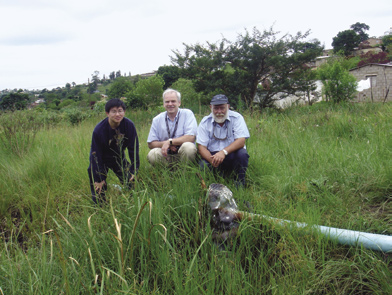
Whether designing low-tech irrigation for villages or giving away halogen lightbulbs at Homewood, students go the distance for a sustainable world.
LAST JANUARY, Richard Tang ’06, a Biomedical Engineering major, stood in a stream bed in rural South Africa, examining an old tire filled with rocks and weeds. At first glance, it seemed to be a piece of trash tossed in the soggy soil. But the tire actually plays a critical role in a poverty-stricken village near Inchanga in the Zulu homeland. It anchors a ram pump that continuously feeds a 500-liter reservoir attached to a garden hose used for irrigation.
Providing a simple water supply system, essential to a village’s survival, has become the project of the Whiting School of Engineering’s student chapter of Engineers Without Borders (EWB), a humanitarian group that implements sustainable engineering projects throughout the world. Tang, who chairs the chapter, in January made an assessment trip to South Africa’s KwaZulu-Natal province with William P. Ball, who is a professor in the Department of Geography and Environmental Engineering (DoGEE) and the chapter’s coadviser. They wanted to see how the chapter could help.
The pump Ball and Tang examined in the village has only two moving parts and uses the energy of falling water to lift a smaller amount of water to a higher elevation than the source. The pump was designed by Dave Alcock, a South African agricultural engineer and codirector of the Church Agricultural Project (CAP). The EWB chapter had heard about CAP from Laikos Ariston ’04, who had majored in Civil Engineering and worked in KwaZulu-Natal. Alcock’s pump uses small strips of recycled tire rubber and a lead weight to create a check valve, replacing the corrosion-prone spring on a conventional pump.
Efficient and cheap, the pump doesn’t wear out and uses readily available materials— essential elements when designing solutions for an impoverished community, according to Ball. “Sustainability and world development issues are the major engineering challenges facing society today,” he explains.
Edward J. Bouwer, also a DoGEE professor, serves as the EWB chapter’s other co-adviser. Bouwer and Ball also advise another student group concerned about using innovative technologies to reduce poverty: the Whiting School’s three-year-old chapter of Engineers for a Sustainable World (ESW).
Founded by students and the late Charles S. “Chuck” Revelle, who was a DoGEE professor, the ESW chapter begins its sustainability focus with the Homewood campus. Co-chaired in 2005-06 by Peter Lillehoj ’06 and Emily Kumpel ’06, both Mechanical Engineering majors, the ESW chapter works with Facilities Management to find new ways to save energy on campus. Its projects have included giving away halogen bulbs to encourage students to replace less-efficient light bulbs and developing a way for vending machines to maintain products at a stable temperature without running constantly. Among the many other areas of interest that the chapter has identified are bioenergy, fuel cells, micro-turbines, mobile telecommunications, and control systems.
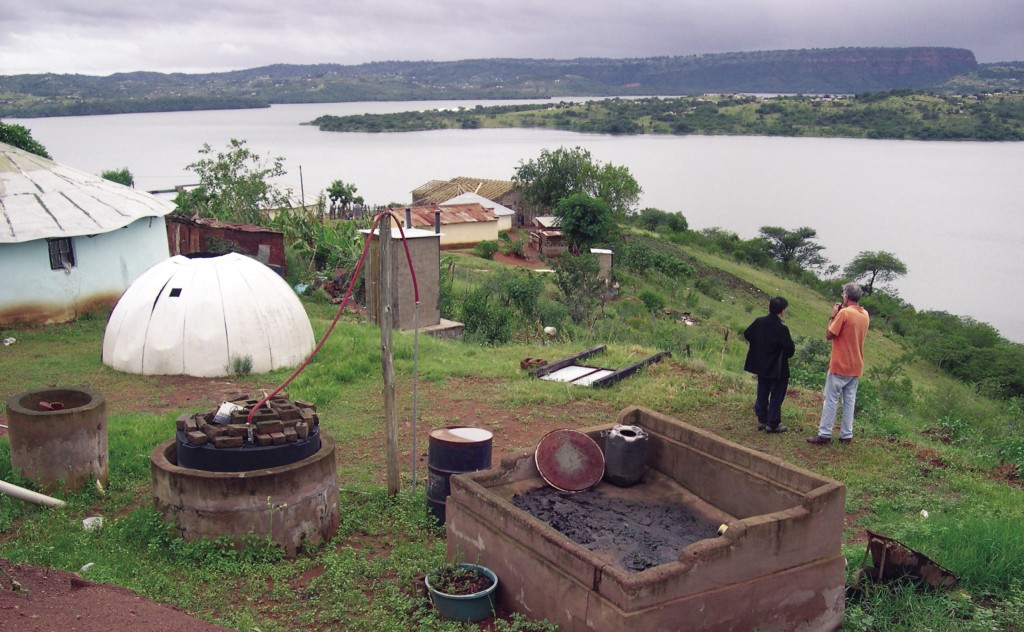
“What I learned was that you can have the latest and best technology, but as an engineer, you have to have cultural and geographic sensitivity, too.” Richard Tang ’06
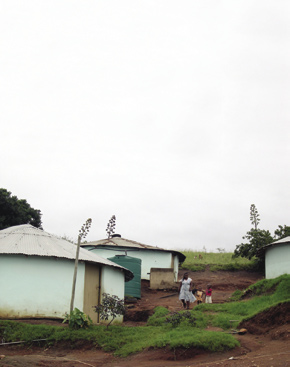
This spring, the recycling effort led by enthusiastic undergraduates helped prompt the Johns Hopkins University to create a new position: manager of energy management and environmental stewardship. Davis Bookhart was hired to lead this “greening” effort, which has strong support from DoGEE faculty and the ESW chapter. Alan Stone, a DoGEE professor, and Ball are feeding ideas to Bookhart. As Ball mentioned in The JHU Gazette (April 17), “In these and other regards, the academic campus should strive to be a model for society in general.”
Both ESW and EWB give students invaluable real-world practice in project planning, working with faculty and professional engineers, and in making sense of technology, budgeting, and raising funds. The chapters also provide students with clear illustrations of how the skills they learn in college can be employed to make a real and positive difference in the world.
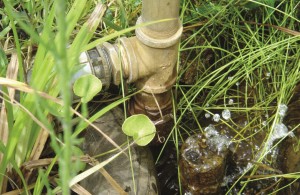
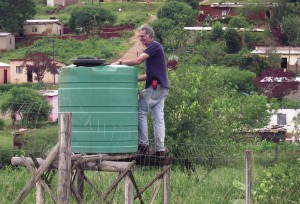
Tang and Ball set that process in motion on their January trip to South Africa for EWB. Like much of sub-Saharan Africa, the village near Inchanga has been decimated by AIDS. Before the pump was built, each day the elderly women and children carried 25- liter jugs from the stream up the hill to water the community gardens by hand. The EWB chapter is alleviating this back-breaking work by helping to provide the village with a much-needed water conservation plan. “Now the women can store water in the reservoir during the dry season to use as needed,” says Tang. The gardens feed 10 families, including 100 motherless children. “The situation still blows me away,” Tang observes. “The villagers are fortunate to be close to bodies of water, but they just didn’t know how to harness it.”
As Ball explains, “This project increases students’ awareness and appreciation of both the technical and human dimensions of the problems. They quickly learn that it is often the latter that proves to be most important.” For Tang, the trip was an eyeopening experience. “I used to think that all technology should push the frontiers of science and engineering,” he says. “What I learned was that you can have the latest and best technology, but as an engineer, you have to have cultural and geographic sensitivity, too.”
In June, 15 students from the EWB chapter; two faculty members (Ball and Erica Schoenberger, a DoGEE professor); and Nick Pippen, an applications engineer from Maryland, spent several weeks in two sites within the Valley of 1,000 Hills. They installed irrigation systems for the gardens, developed improved designs for the ram pump, and assessed community health and water quality. During the trip, Schoenberger organized evening lectures. Among the speakers were two DoGEE graduates— Gregory Ruiters ’02 PhD, who teaches at Rhodes University, and Patrick Bond ’93 PhD, who directs the Center for Civil Society at the University of KwaZulu-Natal.
Global Lessons Beyond the Books
For students, being forced to put down the textbook is an added benefit to an international experience, notes Nicholas P. Jones, dean of the Whiting School. “At Hopkins, we teach our students to design and build a water supply system for U.S. communities,” he explains. “When students go abroad, they immerse themselves in a totally different culture with different constraints, materials, and problems. They learn to approach problems for which they can’t find solutions in a textbook.”
Jones hopes that by 2010 at least half of Whiting School undergraduates will participate in some type of international experience, whether through studying abroad, taking part in international research or corporate partnerships, or joining groups such as EWB and ESW. “When students graduate with these experiences, they become the engineers who say ‘Why do we have to do it this way?’, ” the dean says. “Through international outreach, we’re doing our share of heavy lifting as members of a global society and improving the human condition.”
That’s exactly what Lillehoj experienced last summer in Oaxaca, Mexico. Through the national ESW SEED Program, he was one of three college students installing a pump in a village whose economy depends upon its crops. “The pump isn’t very complex—it doesn’t need electricity or gasoline and runs off the movement of falling water— but the people had never seen one before,” says Lillehoj. One day, he watched as a little boy from the village intensely studied the pump. “He was mesmerized,” Lillehoj recalls. “It made me realize that we weren’t just installing a pump—we were improving their lives.”




